
Rügen Island: Germany's Coastal Gem
Discover Rügen Island: Germany's largest island, renowned for its dramatic chalk cliffs, historical landmarks, charming seaside resorts, and outdoor adventures.
Rügen Island, the largest island in Germany, is a paradise for nature lovers and history buffs alike. Located in the Baltic Sea, this idyllic destination boasts stunning white chalk cliffs, pristine sandy beaches, and lush green forests. The Jasmund National Park, a UNESCO World Heritage site, is home to the famous Königsstuhl chalk cliff, offering breathtaking views over the sea. Besides natural beauty, the island is dotted with charming seaside resorts like Binz, Sellin, and Göhren, each with their own unique charm and historic piers. Exploring Rügen Island is like stepping back in time. The island is rich in history, with ancient megalithic tombs, classic manor houses, and the remnants of the Prora complex, a colossal relic from the Nazi era. The island's museums, such as the Rügen Museum in Bergen, provide fascinating insights into its storied past. For a taste of local culture, don't miss the traditional Störtebeker Festival, a spectacular open-air theatre performance held each summer. For outdoor enthusiasts, Rügen offers a plethora of activities. Hike or bike through the picturesque landscapes, take a boat tour around the island, or indulge in water sports like windsurfing and sailing. The island's network of well-marked trails makes it easy to explore on foot or by bike, while its calm waters are perfect for a leisurely paddle. Whether you're seeking relaxation or adventure, Rügen Island is sure to captivate your heart.
Local tips in Rugen Island
- Visit the Königsstuhl early in the morning to avoid crowds and get the best light for photos.
- Rent a bike to explore the island's scenic trails and hidden gems at your own pace.
- Check out the local fish markets for fresh seafood and regional delicacies.
- Book your accommodation in advance if you plan to visit during the summer months, as the island is a popular holiday destination.
- Take a day trip to Hiddensee, a car-free island nearby, for a tranquil escape and stunning landscapes.
Rügen Island: Germany's Coastal Gem
Rügen Island, the largest island in Germany, is a paradise for nature lovers and history buffs alike. Located in the Baltic Sea, this idyllic destination boasts stunning white chalk cliffs, pristine sandy beaches, and lush green forests. The Jasmund National Park, a UNESCO World Heritage site, is home to the famous Königsstuhl chalk cliff, offering breathtaking views over the sea. Besides natural beauty, the island is dotted with charming seaside resorts like Binz, Sellin, and Göhren, each with their own unique charm and historic piers. Exploring Rügen Island is like stepping back in time. The island is rich in history, with ancient megalithic tombs, classic manor houses, and the remnants of the Prora complex, a colossal relic from the Nazi era. The island's museums, such as the Rügen Museum in Bergen, provide fascinating insights into its storied past. For a taste of local culture, don't miss the traditional Störtebeker Festival, a spectacular open-air theatre performance held each summer. For outdoor enthusiasts, Rügen offers a plethora of activities. Hike or bike through the picturesque landscapes, take a boat tour around the island, or indulge in water sports like windsurfing and sailing. The island's network of well-marked trails makes it easy to explore on foot or by bike, while its calm waters are perfect for a leisurely paddle. Whether you're seeking relaxation or adventure, Rügen Island is sure to captivate your heart.
When is the best time to go to Rugen Island?
Iconic landmarks you can’t miss
OZEANEUM Stralsund GmbH
Explore the wonders of the ocean at OZEANEUM Stralsund, a premier marine museum and aquarium showcasing marine life and ecological education.

Baumwipfelpfad im Naturerbe Zentrum Rügen
Experience the breathtaking treetop walk and stunning views at Baumwipfelpfad im Naturerbe Zentrum Rügen, a must-visit destination for nature lovers.

Binzer Strand
Discover the captivating beauty of Binzer Strand, a stunning public beach on Rügen Island, perfect for relaxation, family fun, and water activities.
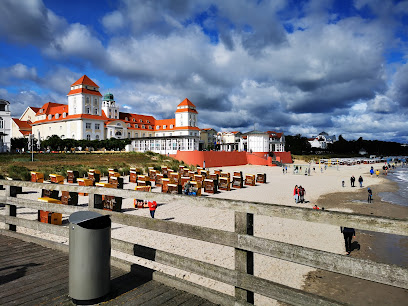
Granitz Hunting Castle
Discover the enchanting Granitz Hunting Castle, a historical gem surrounded by nature's beauty on the scenic island of Rügen.
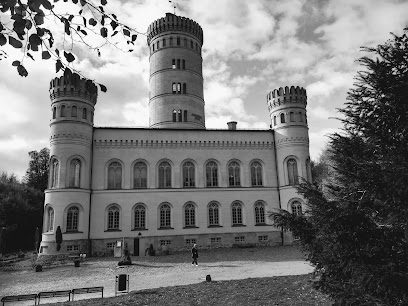
Jasmund National Park
Explore Jasmund National Park, a UNESCO World Heritage site with stunning chalk cliffs, lush forests, and diverse wildlife on Rügen Island.

Dokumentationszentrum Prora
Visit Dokumentationszentrum Prora to uncover the complex history of this historical landmark while enjoying breathtaking coastal views.

Sand sculpture festival in Binz
Explore the breathtaking Sand Sculpture Festival in Binz, where artistry meets the beach, creating stunning sand masterpieces for all to enjoy.

Southeast Rügen Biosphere Reserve
Experience the breathtaking landscapes and rich biodiversity of the Southeast Rügen Biosphere Reserve, a UNESCO World Heritage site in Germany.

Ostrügen
Discover the tranquil beauty of Ostrügen, a nature preserve in Bergen auf Rügen, where serene landscapes and rich biodiversity await every traveler.

Königsstuhl National Park Centre
Explore the breathtaking cliffs and rich biodiversity at the Königsstuhl National Park Centre on Rügen Island, a must-visit destination for nature enthusiasts.

Rügen
Discover Rügen, Germany's largest island, famous for its chalk cliffs, sandy beaches, and rich cultural heritage, perfect for nature lovers and history buffs alike.

German Oceanographic Museum
Immerse yourself in the depths of the ocean at the German Oceanographic Museum, where marine wonders come to life in Stralsund.

Königsstuhl Kreidefelsen
Explore the breathtaking Königsstuhl Kreidefelsen, a stunning chalk cliff and hiking haven on Germany's Baltic coast, offering panoramic views and rich biodiversity.
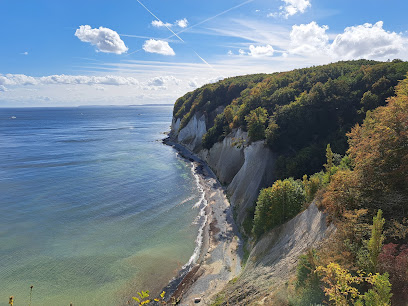
Cape Arkona Lighthouse
Experience the breathtaking views and rich history at Cape Arkona Lighthouse, a must-see gem on the stunning island of Rügen.

Erlebniswelt U-Boot
Explore the depths of submarine history at Erlebniswelt U-Boot, a captivating maritime museum in Sassnitz, perfect for families and history lovers.

Unmissable attractions to see
Baumwipfelpfad im Naturerbe Zentrum Rügen
Discover the enchanting treetop pathway at Baumwipfelpfad im Naturerbe Zentrum Rügen, where nature meets adventure in breathtaking harmony.

Granitz Hunting Castle
Explore the enchanting Granitz Hunting Castle, a stunning blend of architecture and nature offering breathtaking views and rich historical insights.

Dokumentationszentrum Prora
Explore the historical depths of Prora at the Dokumentationszentrum, a poignant museum situated along the beautiful shores of Rügen.

Sand sculpture festival in Binz
Experience the artistry of sand sculptures at Binz's Sand Sculpture Festival, a unique cultural event that delights visitors with stunning sand creations.

Southeast Rügen Biosphere Reserve
Explore the stunning Southeast Rügen Biosphere Reserve, a UNESCO World Heritage site featuring diverse ecosystems, scenic hiking trails, and rich cultural heritage.

Königsstuhl National Park Centre
Explore the breathtaking beauty of the Königsstuhl National Park Centre, a gateway to Rügen's iconic chalk cliffs and rich natural heritage.

Rügen Railway & Technology Museum
Discover the charm of vintage trains and innovative technology at Rügen Railway & Technology Museum, a must-visit for history and travel enthusiasts.

Dinosaur Land
Explore the prehistoric wonders of Dinosaur Land, an enchanting amusement park in Glowe featuring lifelike dinosaur replicas and family-friendly activities.

Inselrodelbahn
Discover the thrill of summer tobogganing at Inselrodelbahn, where excitement meets the stunning landscapes of Rügen Island.

Rügenpark
Discover Rügenpark in Gingst: An amusement park paradise blending thrilling rides, scenic beauty, and family-friendly fun in the heart of nature.

Galileo Wissenswelt Rügen - Museum in Prora - Sehenswürdigkeit
Explore the thrill of science and fun at Galileo Wissenswelt Rügen, a unique museum and amusement park experience for all ages.

Victoria-Sicht
Discover the stunning beauty of the Baltic Sea at Victoria-Sicht, a must-visit observation deck in Sassnitz, Germany.

Pirate Island Rügen GmbH
Discover the wonder of Pirate Island Rügen, a thrilling amusement park and indoor playground perfect for family adventures in Putbus, Germany.

Lotsenturm Thiessow
Discover Lotsenturm Thiessow, a breathtaking lookout tower in Mönchgut, offering stunning Baltic Sea views and picturesque hiking trails.

Aussichtplattform Adlerhorst - Baumwipfelpfad Rügen Naturerbezentrum Rügen
Experience the breathtaking beauty of Rügen Island from the Adlerhorst Observation Deck, a unique treetop adventure that connects you with nature.

Essential places to dine
Weltenbummler
Experience exquisite Mediterranean and German cuisine at Weltenbummler in Binz with breathtaking views of the Baltic Sea.

Nautilus
Experience culinary excellence at Nautilus in Putbus—where fine dining meets comfort in a picturesque setting.

Bootshaus Binz
Indulge in exquisite seafood dishes with stunning views at Bootshaus Binz – where taste meets tranquility along the Baltic Sea.

Kleine Melodie
Experience exquisite seafood dining at Kleine Melodie in Sellin, where fresh catches meet European culinary traditions in a stunning seaside setting.

Restaurant Strandhalle
Experience authentic German flavors at Restaurant Strandhalle in Binz with stunning views of the Baltic Sea.

Jägerhütte Putbus
Discover the flavors of Germany at Jägerhütte Putbus - where tradition meets taste in a cozy setting.

Zum Fischer
Experience authentic coastal cuisine at Zum Fischer in Baabe – where fresh seafood meets warm hospitality.

Restaurant Puk up‘n Balken
Experience authentic local cuisine at Restaurant Puk up‘n Balken in Bergen auf Rügen - where every dish tells a story.

Restaurant Plattdüütsch
Experience authentic European cuisine at Restaurant Plattdüütsch in Binz, where fresh seafood meets traditional flavors on Rügen Island.

Zur Kajüte Fischrestaurant
Experience the finest seafood at Zur Kajüte Fischrestaurant in Sellin – where fresh flavors meet delightful dining.
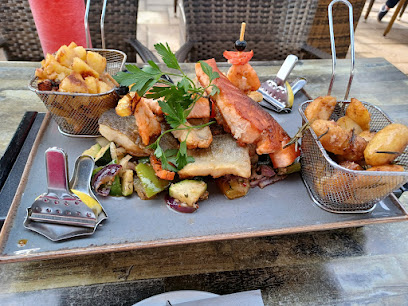
Gastwirtschaft am Markt
Experience authentic German cuisine in Bergen auf Rügen at Gastwirtschaft am Markt, where tradition meets taste in every dish.

Heimathafen Prora
Experience exquisite hamburgers and American flavors at Heimathafen Prora while enjoying breathtaking views along the Baltic coast.

Strandlücke Restaurant & Bar
Experience exquisite coastal cuisine at Strandlücke Restaurant & Bar in Binz - where fresh flavors meet stunning ocean views.

Wirtshaus im Jagdschloss Granitz
Discover authentic German flavors amidst nature at Wirtshaus im Jagdschloss Granitz - where tradition meets tranquility.

Wirtshaus am Jagdschloss Granitz
Discover authentic German cuisine in a picturesque setting at Wirtshaus am Jagdschloss Granitz, where nature meets tradition.

Markets, malls and hidden boutiques
Rügen Galerie
Explore Rügen Galerie, a lively shopping mall in Sassnitz, offering diverse shops, delightful dining, and unique gifts for every traveler.

Rügen-Center
Explore Rügen-Center, the premier shopping mall in Bergen auf Rügen, offering diverse shops, delicious food, and a vibrant atmosphere for all visitors.

Rügen Sassnitz market / The Original
Explore Rügen Sassnitz Market: A local treasure trove of fresh produce, artisanal goods, and authentic German flavors by the Baltic Sea.

Ein Tag am Meer
Explore local craftsmanship and culinary delights at Ein Tag am Meer in Putbus, your go-to store for unique souvenirs and authentic Rügen treats.

Takko
Explore Takko in Bergen auf Rügen for trendy clothing options for the whole family, from stylish women's wear to comfortable children's outfits.

Zum Germanen - Nordischer Schmuck, Souvenirs & Accessoires
Explore Zum Germanen for unique Nordic jewelry and souvenirs in the heart of Göhren, perfect for capturing memories of your travels.
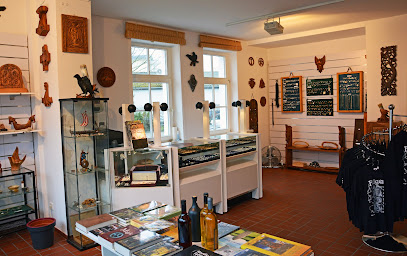
Nordwolle Showroom in Putbus
Explore Rügen's stunning landscapes with quality outdoor gear from Nordwolle Showroom in Putbus, where adventure begins.

Insel Second Hand Boutique Rügen
Explore the charm of sustainable fashion at Insel Second Hand Boutique Rügen, where unique finds await eco-conscious shoppers.
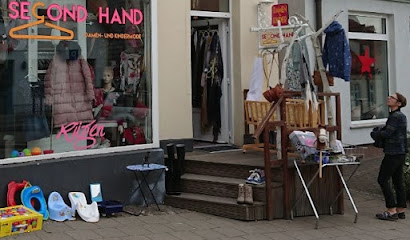
HAUTNAH bodywear
Explore HAUTNAH Bodywear, your ultimate destination for stylish underwear and loungewear in Bergen auf Rügen, offering quality and personalized service.

Wondercastle Rügen
Explore Wondercastle Rügen, a charming souvenir store in Putgarten, filled with unique gifts and local treasures that capture the essence of the island.

Ankerplatz Rügen
Discover unique souvenirs and handcrafted furniture at Ankerplatz Rügen, a must-visit destination in Sellin for unforgettable keepsakes.

Annette Köllmann Moden Inh. A. Köllmann Kurhaus Binz
Explore the elegant world of Annette Köllmann Moden in Binz, where stylish clothing and personalized service create a unique shopping experience.

RÜGENFRUCHTIS
Discover local flavors and unique souvenirs at RÜGENFRUCHTIS, the perfect stop for tourists in Binz, Rügen.

Trendstore
Discover the charm of Baabe at Trendstore, your ultimate destination for unique souvenirs and beach-inspired gifts.

Stein-Ackerdemie & Wohnfühlen
Explore unique home decor and artisanal crafts at Stein-Ackerdemie & Wohnfühlen in Glowe, capturing the essence of local craftsmanship.

Essential bars & hidden hideouts
meerbar | restaurant & bar Rügen
Experience the best of Binz at Meerbar, where delightful cuisine meets stunning sea views for an unforgettable dining experience.

Baumhausrestaurant TIKI BAR
Discover the unique Baumhausrestaurant TIKI BAR in Ummanz, where delicious pizzas meet a magical treehouse dining experience.

Klangpavillon
Discover Klangpavillon, a tranquil beach bar in Sellin offering stunning sea views, delicious drinks, and a perfect spot to unwind by the coast.
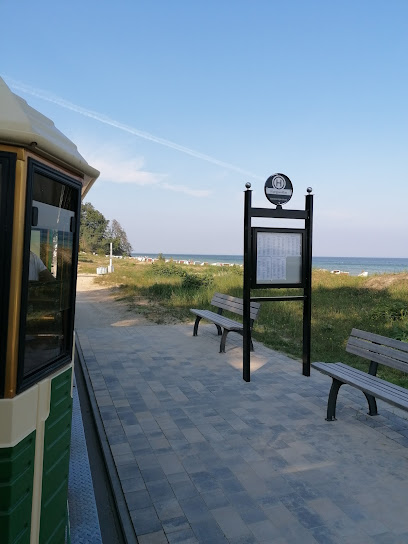
Byntze 1318 Cocktail Bar
Experience the essence of luxury at Byntze 1318 Cocktail Bar in Binz, where expertly crafted cocktails and a chic ambiance await.

Unter Deck Bierbar
Unter Deck Bierbar: A vibrant bar in Baabe offering a fantastic selection of local and international beers and cocktails in a cozy atmosphere.
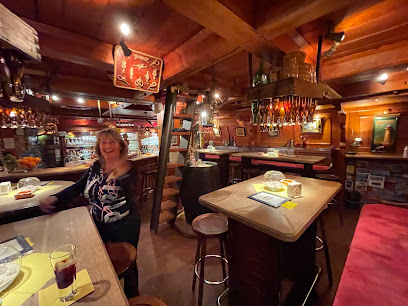
Milchbock
Experience the vibrant atmosphere at Milchbock, the perfect bar in Göhren for relaxing drinks and stunning coastal views.

Willis Strandbar
Experience the vibrant beach life at Willis Strandbar, where refreshing drinks and stunning ocean views create the perfect getaway in Binz.
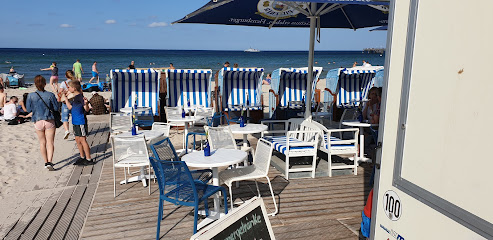
Kiek In
Experience the charm of Kiek In, a cozy pub in Göhren, where delightful drinks and local culture await you.

HEIMAAT Bar Lounge
Experience the charm of Heimaat Bar Lounge in Binz, where exceptional drinks meet breathtaking coastal views on the Strandpromenade.

Altstadtkeller
Experience the authentic flavors of Germany at Altstadtkeller, a cozy pub in Bergen auf Rügen known for its exceptional meat dishes and local hospitality.

Sunny Beach Bar
Experience the vibrant atmosphere of Sunny Beach Bar in Göhren, where refreshing drinks meet stunning seaside views and lively entertainment.

Bar 04 + Seefrieden Binz
Experience the charm of Bar 04 + Seefrieden in Binz, where delicious drinks and stunning lake views come together for an unforgettable experience.

Totti‘s Strandbar
Experience the ultimate beachside relaxation at Totti's Strandbar in Sellin, where stunning views and refreshing drinks await every visitor.
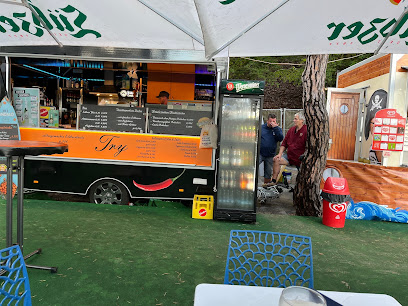
Rügen Strandbar Sven Pukowski
Experience the vibrant beachside atmosphere at Rügen Strandbar, where refreshing drinks and stunning views of the Baltic Sea await you.

Seebrücken Lounge
Experience the ultimate coastal retreat at Seebrücken Lounge in Binz, where stunning sea views and vibrant nightlife await.

Local Phrases about Rugen Island
-
- HelloMoin
[moin] - GoodbyeTschüss
[tʃʏs] - YesJa
[ja] - NoNein
[naɪn] - Please/You're welcomeBitte
[bɪtə] - Thank youDanke
[ˈdaŋkə] - Excuse me/SorryEntschuldigung
[ɛntˈʃʊldɪɡʊŋ] - How are you?Wie geht es dir?
[viː ɡeːt ɛs diːɐ] - Fine. And you?Gut. Und dir?
[ɡuːt ʊnt diːɐ] - Do you speak English?Sprechen Sie Englisch?
[ˈʃprɛçən ziː ˈɛŋlɪʃ] - I don't understandIch verstehe nicht
[ɪç fɛɐˈʃteːə nɪçt]
- HelloMoin
-
- I'd like to see the menu, pleaseIch würde gerne die Speisekarte sehen, bitte
[ɪç ˈvʏʁdə ˈɡɛʁnə diː ˈʃpaɪzəˌkaʁtə ˈzeːən ˈbɪtə] - I don't eat meatIch esse kein Fleisch
[ɪç ˈɛsə kaɪn flaɪʃ] - Cheers!Prost!
[pʁoːst] - I would like to pay, pleaseIch möchte bitte zahlen
[ɪç mœçtə ˈbɪtə ˈtsaːlən]
- I'd like to see the menu, pleaseIch würde gerne die Speisekarte sehen, bitte
-
- Help!Hilfe!
[ˈhɪlfə] - Go away!Geh weg!
[ɡeː vɛk] - Call the Police!Rufen Sie die Polizei!
[ˈʁuːfn ziː diː pɔˈliːtsaɪ] - Call a doctor!Rufen Sie einen Arzt!
[ˈʁuːfn ziː ˈaɪnən aʁtst] - I'm lostIch habe mich verlaufen
[ɪç ˈhaːbə mɪç ˌfɛɐˈlaʊfn̩] - I'm illIch bin krank
[ɪç bɪn kraŋk]
- Help!Hilfe!
-
- I'd like to buy...Ich würde gerne kaufen...
[ɪç ˈvʏʁdə ˈɡɛʁnə ˈkaʊfn] - I'm just lookingIch schaue nur
[ɪç ˈʃaʊə nuːɐ] - How much is it?Wie viel kostet es?
[viː fiːl ˈkɔstət ɛs] - That's too expensiveDas ist zu teuer
[das ɪst tsuː ˈtɔʏɐ] - Can you lower the price?Können Sie den Preis senken?
[ˈkœnən ziː dɛn praɪs ˈzɛŋkən]
- I'd like to buy...Ich würde gerne kaufen...
-
- What time is it?Wie spät ist es?
[viː ʃpɛːt ɪst ɛs] - It's one o'clockEs ist ein Uhr
[ɛs ɪst aɪn ʊʁ] - Half past (10)Halb (10) Uhr
[halb (10) ʊʁ] - MorningMorgen
[ˈmɔʁɡən] - AfternoonNachmittag
[ˈnaχmɪˌtaːk] - EveningAbend
[ˈaːbənt] - YesterdayGestern
[ˈɡɛstɐn] - TodayHeute
[ˈhɔʏtə] - TomorrowMorgen
[ˈmɔʁɡən] - 1Eins
[aɪns] - 2Zwei
[tsvaɪ] - 3Drei
[dʁaɪ] - 4Vier
[fiːɐ] - 5Fünf
[fʏnf] - 6Sechs
[zɛks] - 7Sieben
[ˈziːbən] - 8Acht
[axt] - 9Neun
[nɔʏn] - 10Zehn
[tseːn]
- What time is it?Wie spät ist es?
-
- Where's a/the...?Wo ist ein/der...?
[vo ɪst aɪn/deːɐ] - What's the address?Was ist die Adresse?
[vas ɪst diː ˈadʁɛsə] - Can you show me (on the map)?Können Sie mir (auf der Karte) zeigen?
[ˈkœnən ziː mɪʁ (aʊf deːɐ ˈkaʁtə) ˈtsaɪɡən] - When's the next (bus)?Wann kommt der nächste (Bus)?
[van kɔmt deːɐ ˈnɛχstə (bʊs)] - A ticket (to ....)Eine Fahrkarte (nach ....)
[ˈaɪnə ˈfaːɐ̯kastə (nax)]
- Where's a/the...?Wo ist ein/der...?
History of Rugen Island
-
Rügen Island has a rich history that dates back to the early Slavic tribes known as the Rugii. These tribes settled on the island around the 9th century and established fortified settlements, known as 'burgwalls.' The remnants of these early fortifications can still be found in various locations on the island, such as the Jaromarsburg on Cape Arkona. The Slavic influence is evident in local archaeological finds, including pottery and tools.
-
In the 12th century, the island came under Danish control after a series of military campaigns led by King Valdemar I. It remained under Danish rule until the Treaty of Roskilde in 1658, when it was ceded to Sweden. The island eventually became part of Prussia in 1815 following the Treaty of Vienna. This period saw the construction of many of Rügen's historic churches, such as St. Mary's Church in Bergen, which showcases the transition from Romanesque to Gothic architecture.
-
From 1648 until 1815, Rügen was part of Swedish Pomerania. During this time, the island experienced significant cultural and economic changes. Swedish administration brought new agricultural techniques and reformed local governance. The town of Stralsund, though located on the mainland, served as the administrative center and had a considerable influence on Rügen's development. The island's architecture from this period includes several manor houses and estates that reflect Swedish baroque styles.
-
Rügen played a strategic role during the Napoleonic Wars. The island was occupied by French troops in 1807 as part of Napoleon's campaign against Prussia. The occupation led to significant hardship for the local population, including requisitioning of resources and forced conscription. The French garrison constructed fortifications, some of which can still be seen today. After Napoleon's defeat, the island was returned to Prussian control.
-
The Romantic movement of the 19th century brought Rügen into the cultural spotlight, largely through the works of the painter Caspar David Friedrich. His iconic landscapes, such as 'Chalk Cliffs on Rügen,' captured the island's dramatic natural beauty and inspired a wave of tourism. Friedrich's work emphasized the island's rugged coastlines, dense forests, and serene lakes, making it a popular destination for artists and nature enthusiasts alike.
-
During World War II, Rügen was the site of one of the Third Reich's most ambitious projects: the Prora complex. Designed as a massive seaside resort for the 'Strength Through Joy' (Kraft durch Freude) program, it was intended to provide leisure activities for German workers. However, the outbreak of the war halted construction, and the complex was never fully completed. After the war, Prora was used by the Soviet and East German military. Today, it stands as a monumental relic of the era and has been partially repurposed for modern use.
-
After World War II, Rügen became part of East Germany. The island's economy struggled under the communist regime, but it remained a popular holiday destination for East Germans. The fall of the Berlin Wall and German reunification in 1990 brought significant changes. Investment in infrastructure and tourism revitalized the island, leading to the restoration of historic sites and the development of new attractions. Today, Rügen is a thriving tourist destination that offers a blend of natural beauty and rich history.
Rugen Island Essentials
-
Rugen Island is located in the Baltic Sea and is part of the state of Mecklenburg-Vorpommern in Germany. The nearest major airport is Rostock-Laage Airport, which is approximately 150 kilometers away. From the airport, you can rent a car or take a train to Stralsund, where you can cross the Rugen Bridge or take the Rugen Causeway to the island. Alternatively, you can take a direct train from Berlin to Sassnitz or Binz on Rugen Island, which takes about 3 to 4 hours.
-
Once on Rugen Island, you can use various modes of transportation. The island has a well-connected public transport system, including buses and regional trains. Renting a bicycle or car is also a popular option for exploring the island at your own pace. Taxis are available but can be expensive. During the summer months, ferries operate between different parts of the island and to the mainland.
-
The official currency in Germany is the Euro (EUR). Credit and debit cards are widely accepted in most hotels, restaurants, and shops. However, it's advisable to carry some cash, especially for smaller establishments and local markets. ATMs are readily available throughout the island, and major banks have branches in towns like Binz and Sassnitz.
-
Rugen Island is generally a safe destination for tourists. However, standard precautions should be taken to ensure your safety. Avoid leaving your belongings unattended and be cautious in crowded areas. There are no specific high-crime areas targeting tourists, but it's always best to stay vigilant. The island's rural areas are very safe, and violent crime is rare.
-
In case of emergency, dial 112 for immediate assistance. This number connects you to police, fire, and medical services. Major towns on the island have medical facilities and pharmacies where you can obtain over-the-counter medications. It's advisable to have travel insurance that covers medical emergencies. For non-urgent medical issues, local clinics and pharmacies are available.
-
Fashion: Do dress comfortably and appropriately for the weather. In summer, casual wear is fine, but bring a light jacket for cooler evenings. Religion: Respect local customs and traditions. If visiting churches, dress modestly and keep noise to a minimum. Public Transport: Be respectful and offer your seat to elderly passengers. Don’t eat or drink on public transport. Greetings: A handshake is the common form of greeting. A friendly 'Guten Tag' (Good Day) is appreciated. Eating & Drinking: Do try local delicacies like 'Rugen Fish' and 'Sanddorn' products. Don’t forget to say 'Prost' (Cheers) when clinking glasses.
-
To experience Rugen Island like a local, visit the local farmers' markets where you can buy fresh produce and regional specialties. Take a leisurely walk or bike ride along the many scenic trails. Engage with locals, who are often friendly and willing to share insider tips about the best spots on the island. Don't miss visiting the chalk cliffs of Jasmund National Park and the historical seaside resort of Binz.
Trending Landmarks in Rugen Island
-
OZEANEUM Stralsund GmbH
-
Baumwipfelpfad im Naturerbe Zentrum Rügen
-
Binzer Strand
-
Granitz Hunting Castle
-
Jasmund National Park
-
Dokumentationszentrum Prora
-
Sand sculpture festival in Binz
-
Southeast Rügen Biosphere Reserve
-
Ostrügen
-
Königsstuhl National Park Centre
-
Rügen
-
German Oceanographic Museum
-
Königsstuhl Kreidefelsen
-
Cape Arkona Lighthouse
-
Erlebniswelt U-Boot
Nearby Cities to Rugen Island
-
Things To Do in Szczecin
-
Things To Do in Næstved
-
Things To Do in Køge
-
Things To Do in Copenhagen
-
Things To Do in Roskilde
-
Things To Do in Slagelse
-
Things To Do in Lubeck
-
Things To Do in Hillerød
-
Things To Do in Helsingør
-
Things To Do in Nyborg
-
Things To Do in Berlin
-
Things To Do in Kalundborg
-
Things To Do in Potsdam
-
Things To Do in Odense
-
Things To Do in Sønderborg













